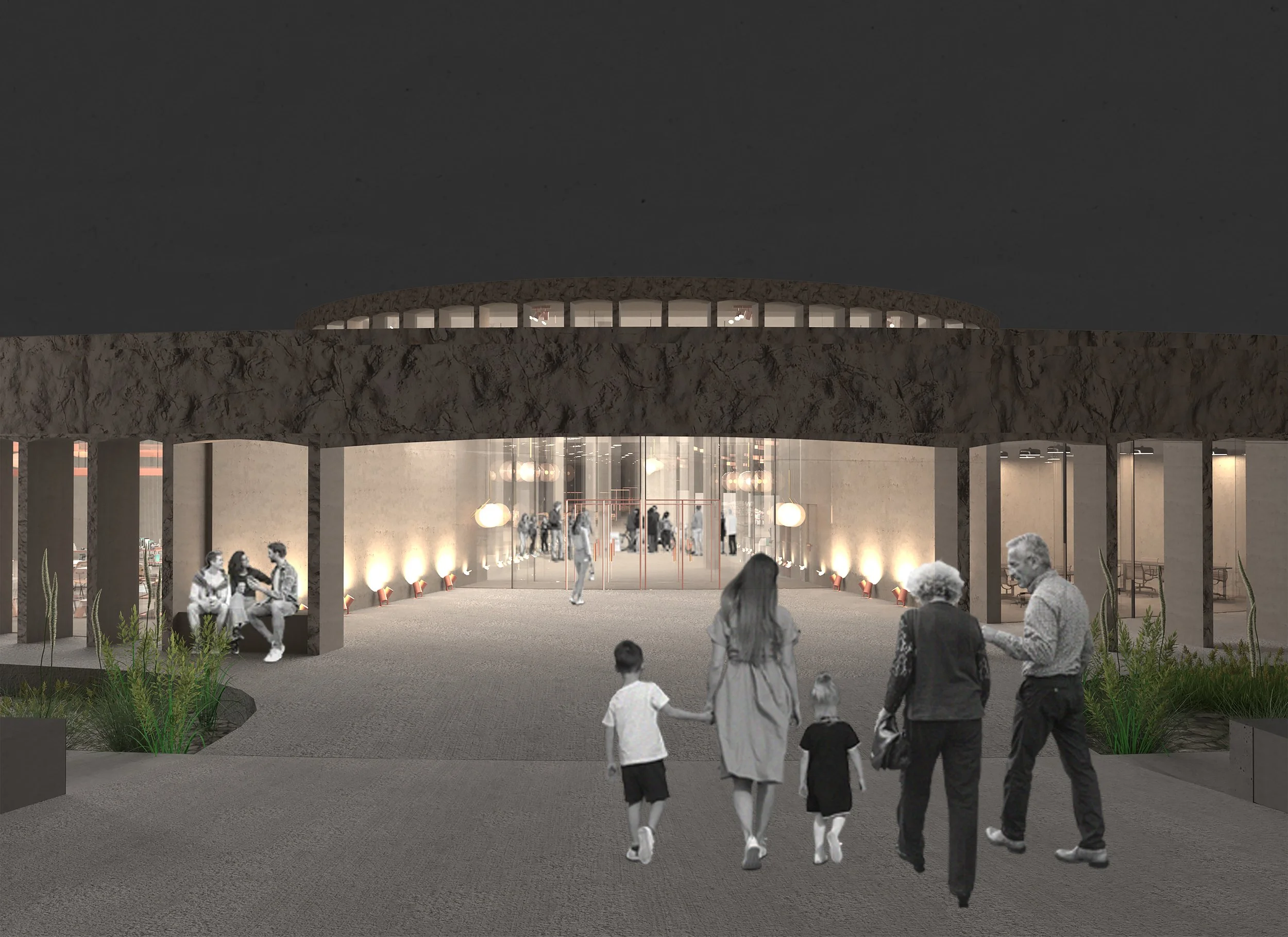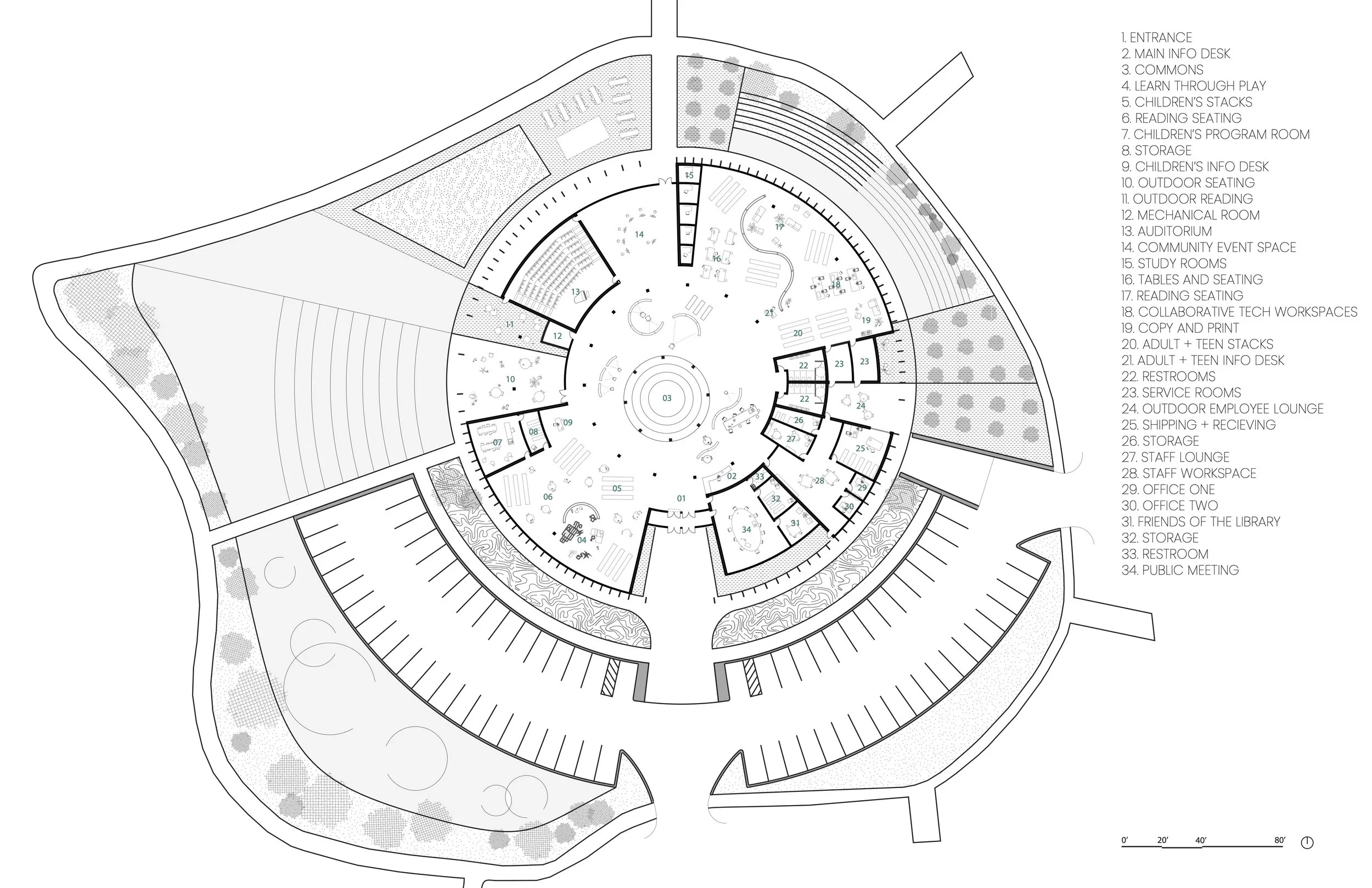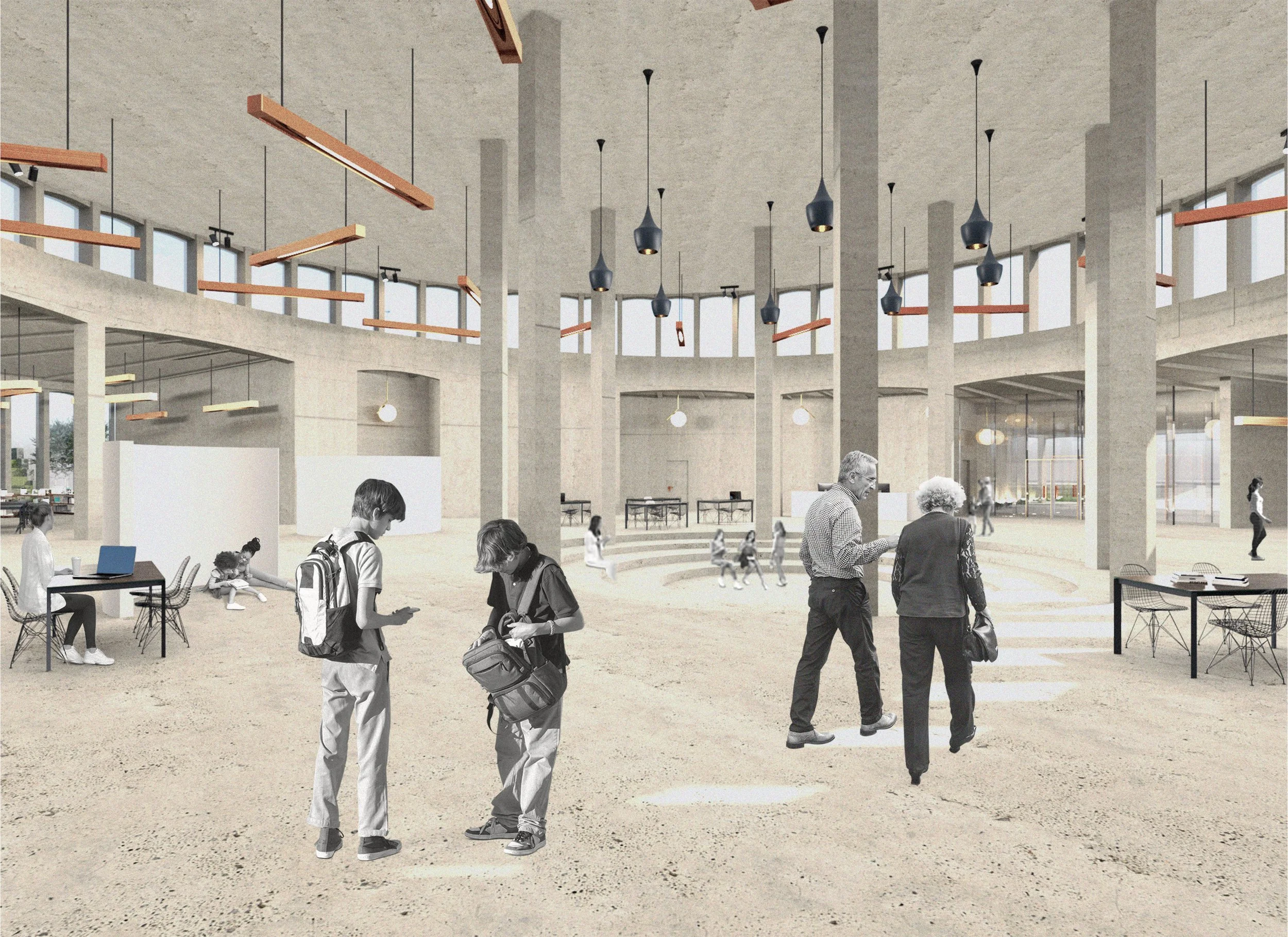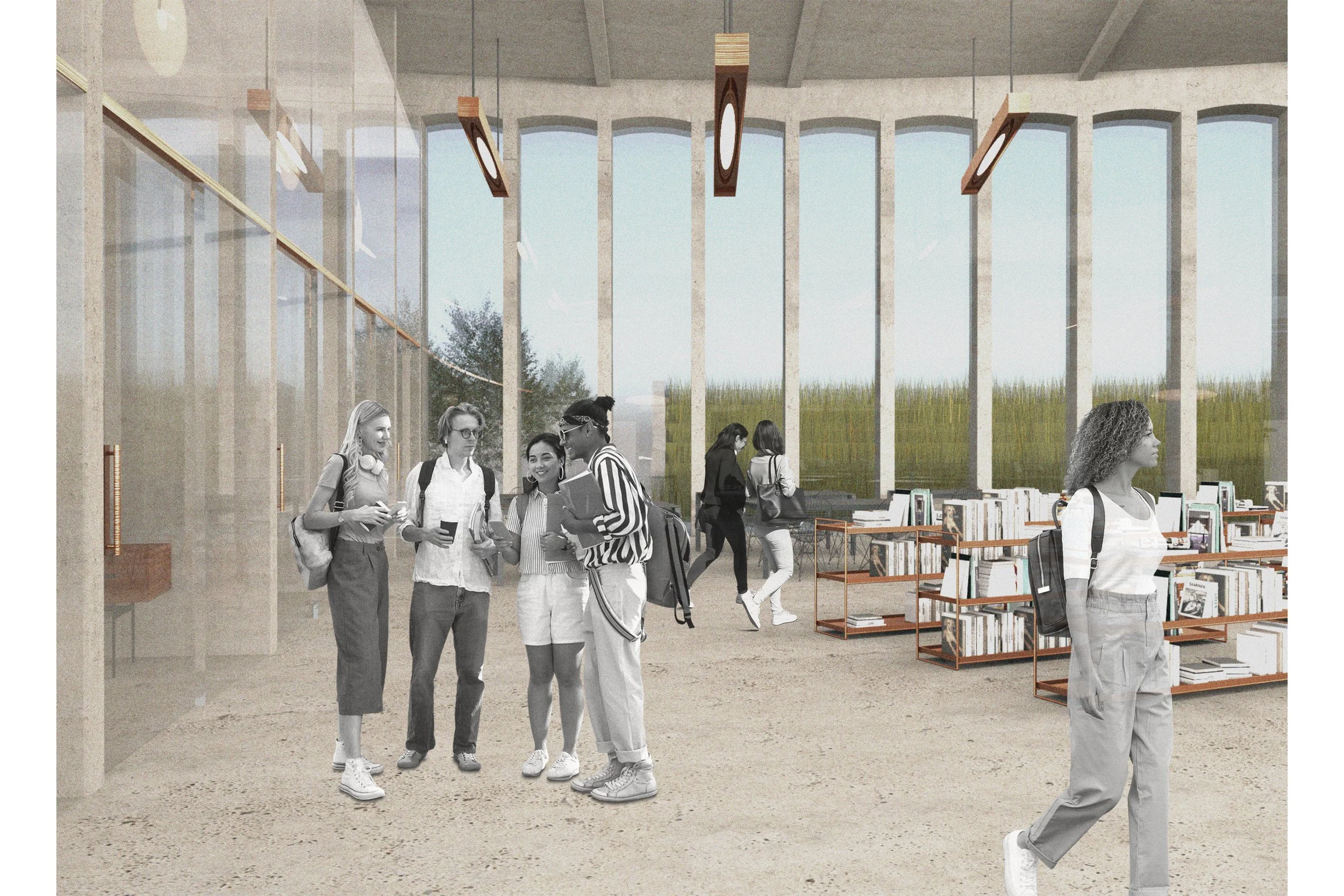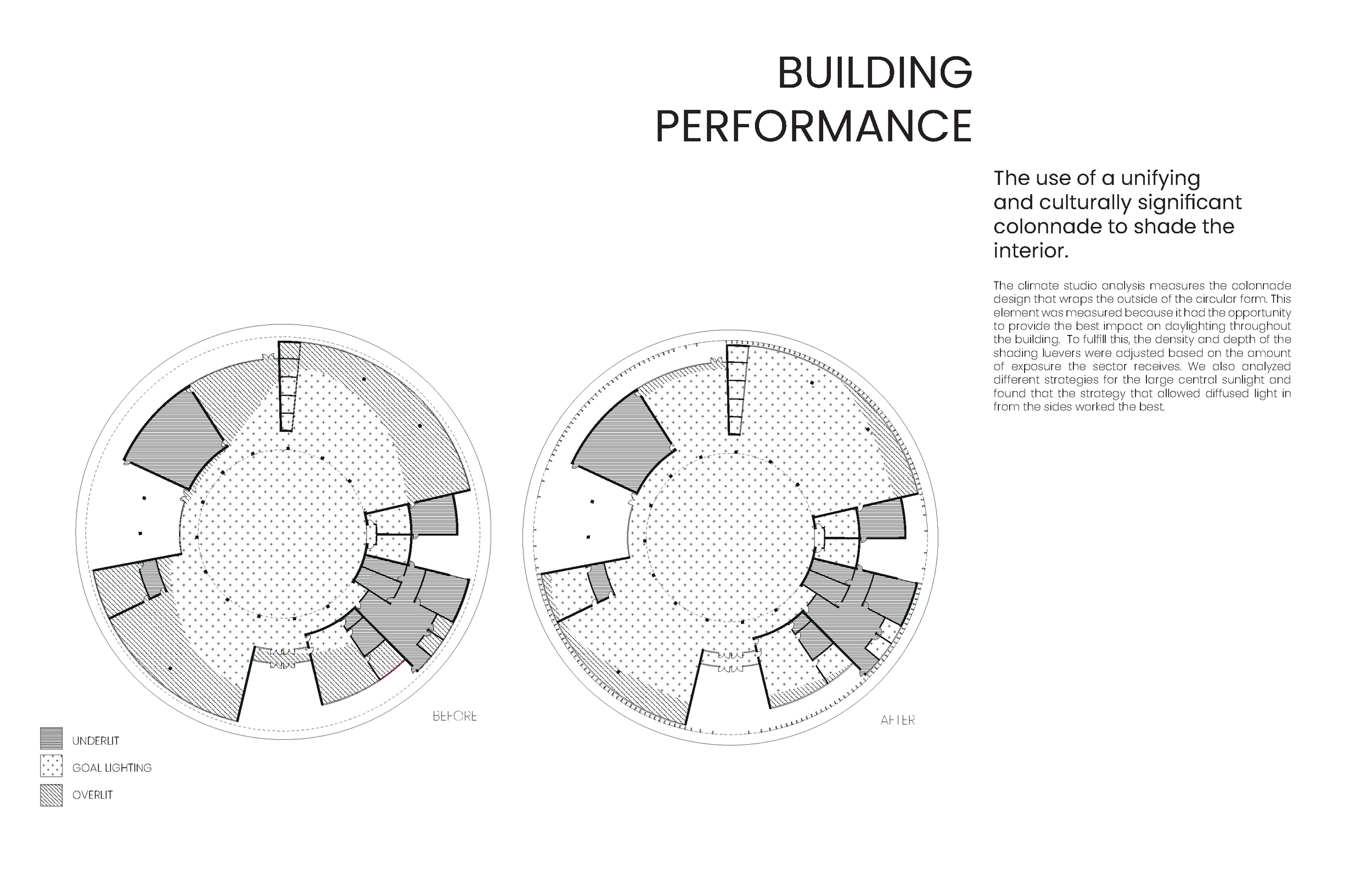South Commons Library
*
South Commons Library *
Where | Lincoln NE
When | 2022
Awards | SGH Concepts & Dri-Design Competition Finalist
The purpose of this project was to reimagine a public library and re-frame it as a commons. To create this commons, looking to the theory of a social condenser is beneficial. A social condenser is a mixing of programs and people that aims to strengthen connections, knowledge, and democratic processes within the community. A developing and increasingly diverse community needs a common space working to combat the highly individualistic trends of today and to function in an ever-changing society. The collaboration of physical space and active public spheres (both social and political) to foster collective activity is the basis of the commons.
The commons provides spaces for encounters that strengthen and further the best interest of the community—without a consumer agenda. This is a place where both formal and informal events and progress take place, notably civic engagement. To see these goals to fruition, we are striving to make the commons a central hub for the community, designed to prevent intimidation and polarization. The physical design fosters transparency through open sightlines and interconnected spaces that encourage spontaneous engagement rather than isolation. By eliminating enclosed, exclusive areas, the commons ensures that all users—regardless of background—have equitable access to shared resources and discussions, reinforcing a welcoming atmosphere. Users will be immersed in the clashing of a multitude of programs in the center commons, with an intentional lack of seclusion both physically and visually.
The circular form is utilized because it most effectively emphasizes the intersections of public space through a circulation ring in the center that bleeds into the various programs. This wide intersection allows for various configurations, hosting conversations and debates unseen in previous social condensers, specifically promoting democratic processes. Unlike traditional linear or gridded layouts that can segment and isolate groups, the radial organization promotes a continuous exchange of ideas and perspectives. The asymmetrical sectored circle also lends itself to non-hierarchical organizations and intriguing push-and-pull distortions, complementing environmental and view-framing concerns. Additionally, unlike previous social condensers that often imposed rigidly programmed interactions, this commons embraces flexibility, allowing users to define their engagement. The fluidity of the circular form and its asymmetrical sectors accommodate both structured civic forums and informal social gatherings, making the space adaptable to the evolving needs of the community.
